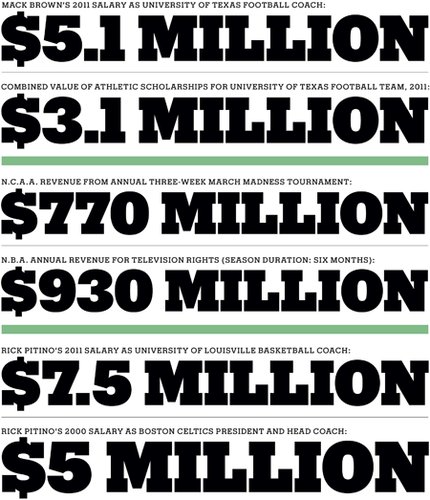
by Ravi Marfatia, Staff Writer
Should certain student athletes get paid in addition to their athletic scholarships? Prominent sportswriters certainly think so.
Michael Wilbon, a senior columnist for ESPN.com, has said student athletes who participate in basketball and football should get paid based on contracts such as the 10.8 billion dollar deal the NCAA signed with CBS and Turner Sports in 2011 regarding television rights for college basketball’s post-season “March Madness” tournament. Investigative sports reporter and host for HBO, Bryant Gumbel, echoed those sentiments when he said, “What a great business model, make billions, but you don’t have to pay the employees anything.”
Apparently the California Legislature has heard these concerns. They’ve just passed a bill known as the “Student Athlete Bill of Rights” to be added to their Education Code relating to postsecondary education. It was approved by the Governor of California, Jerry Brown, on September 27, 2012. This is essentially the first piece of legislation attempting to give student athletes additional rights in response to the amount of revenue certain institutions generate from their athletic programs.
The major provisions in the bill include the requirement that an institution provide an equivalent scholarship to a student athlete if a program does not renew his or her scholarship because of an incapacitating injury or illness resulting from participation in the program. A student athlete, however, cannot use injury as an excuse to get out of the obligation to play on a team and still receive a scholarship. A doctor has to declare the athlete is incapable to play. Basically, if a student athlete suffers a “career-ending” injury, the school can’t just cut his or her scholarship when that student’s only reason for attending was because of the full athletic scholarship given to play a sport that ultimately generates millions of dollars for the school. (to absolve the cost of the ridiculously expensive tuition)
The institution must also provide an equivalent scholarship to a good-standing student athlete who has exhausted their eligibility for up to one year, or until the student athlete completes his or her undergraduate degree, whichever is shorter.
That is not a misprint–you read that right. That means that a traditional four year student athlete (maximum allowable time per NCAA regulations) will get an additional tuition-free year after they are done competing in their sport. Say, for example, you were a four-year starter on the basketball team and you can no longer play and have completed your degree (and assuming you are not good enough to play professionally). Hey, take the next year to start on your master’s degree. Is that something you didn’t plan on doing? Ok, then take all the classes you wanted to take but couldn’t because of stupid general education requirements (ballroom dancing perhaps). Just enjoy that college experience for one more year. It’s the school’s way of saying “thank you” for the large amount of money they made off of an athletic program you helped contribute to.
Importantly, these provisions only apply to colleges and universities in California that receive, on average, $10,000,000 or more in annual revenue derived from media rights for intercollegiate athletics. Therefore, this bill would only affect institutions that generate a substantial amount of revenue from their athletic programs. This might not be a direct paycheck for student athletes, but it is a creative way of additionally compensating them in exchange for generating such a large amount of revenue for their respective institutions.